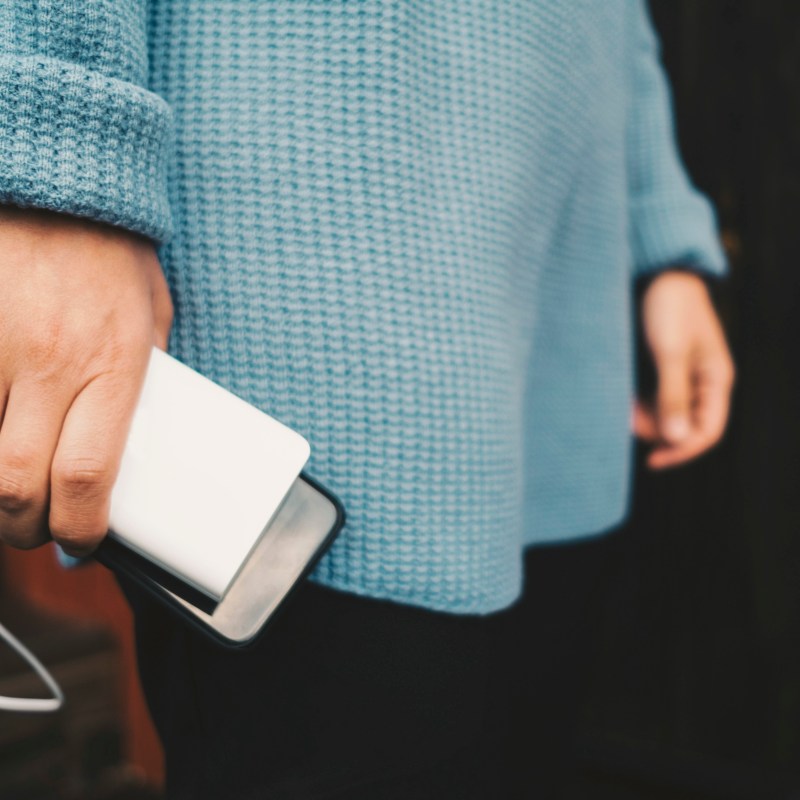
Here’s my latest airport fear: I mix up the rules about bringing battery packs on the plane, and then my red light wand starts smoking mid-flight, leading to an emergency landing.
Videos by TravelAwaits
Does it sound like I’m being dramatic? That’s a fair point—I am dramatic. But maybe not this time around.
Forbes recently reported on a major landing due to an issue with a lithium battery, and it’s far from the first to occur in 2025. (It’s actually been an issue since 2017.)
The flight discussed in the article linked above was heading from Philadelphia to Phoenix and had to make an emergency landing due to a fire caused by a lithium battery in a passenger’s overhead bag.
Apparently, it’s become enough of an issue that the FAA even has a Lithium Battery Incident Tracker.
So, I think it’s time we talked about lithium batteries and other battery packs on planes. Which ones can you bring? Which ones might cause issues? And which battery packs on planes are banned outright?
Battery packs on planes: the basics
The main concern when it comes to bringing battery packs on planes is the lithium-ion batteries that power them.
Lithium-ion batteries are rechargeable and highly efficient, energetically dense batteries that have become widely used over the last decade. They’re used in smartphones, laptops, tablets, and even hybrid vehicles.
But there’s one catch: when lithium-ion batteries heat up, they release flammable gases that can potentially catch fire and are hard to put out.
Worse, lithium-ion batteries are prone to an issue called thermal runaway on planes, which creates a high-heat chain reaction that can lead to smoke and even fires.
What causes thermal runaway in lithium-ion batteries on planes? Unfortunately, simple problems ranging from damage to manufacturing defects to overcharging can contribute to thermal runaway in lithium-ion batteries.
So, how can you make sure you’re following the right protocol when it comes to battery packs on planes—especially considering how ubiquitous lithium-ion batteries are?
A closer look at FAA & TSA rules regarding battery packs on planes
I’ve got some good news: according to the FAA, flight attendants and cabin crews are specially trained to spot smoke and fire from lithium-ion batteries. Given this has been an issue since 2017, that’s no surprise. Additionally, TSA agents are taught to look for lithium-ion batteries in checked luggage.
The TSA has also made it a requirement that passengers pack ALL lithium-ion batteries in their carry-on. The FAA has also laid out other rules that you might want to pay attention to:
- All battery packs must be in a carry-on—and, ideally, should be within reach
- Battery packs on planes should not exceed 100 Wh (or watt hours) per battery
- Battery packs and devices must be fully powered off
- Battery terminals (where you plug things in) must not be in contact with other metals
- Damaged or recalled battery packs should not be packed at all
- Use the FAA’s Lithium Battery Watt Hours Calculator to learn about your device’s Wh (watt hours)
Aside from battery packs, what are the main offenders?
As outlined above, lithium-ion batteries are in just about every portable electronic device used today. The FAA and TSA are mainly concerned with battery packs on planes, as these are prone to thermal runaway that can cause smoke and fires.
Aside from portable chargers and battery packs, other concerns include e-cigarettes and vape pens, smartphones, laptops, and even certain medical devices. However, according to FAA reports on lithium battery incidents on planes over the last two decades, portable chargers (aka battery packs) were responsible for almost 40% of all incidents.
So, what does that mean for you? How can you prevent the chances of a lithium-ion battery issue?
- Keep all battery packs and other lithium-powered devices within reach on the plane
- Invest in quality devices to avoid damage and malfunctioning
- Double-check that you aren’t packing any lithium-powered devices in your checked luggage
